Growing enough safe, delicious produce to feed our growing population is a top priority for farmers. I saw it firsthand while visiting table grape vineyards, citrus groves and stone fruit orchards in the San Joaquin valley. Here, I’m sharing a recap of what I learned during a safe fruits and veggies farm tour.
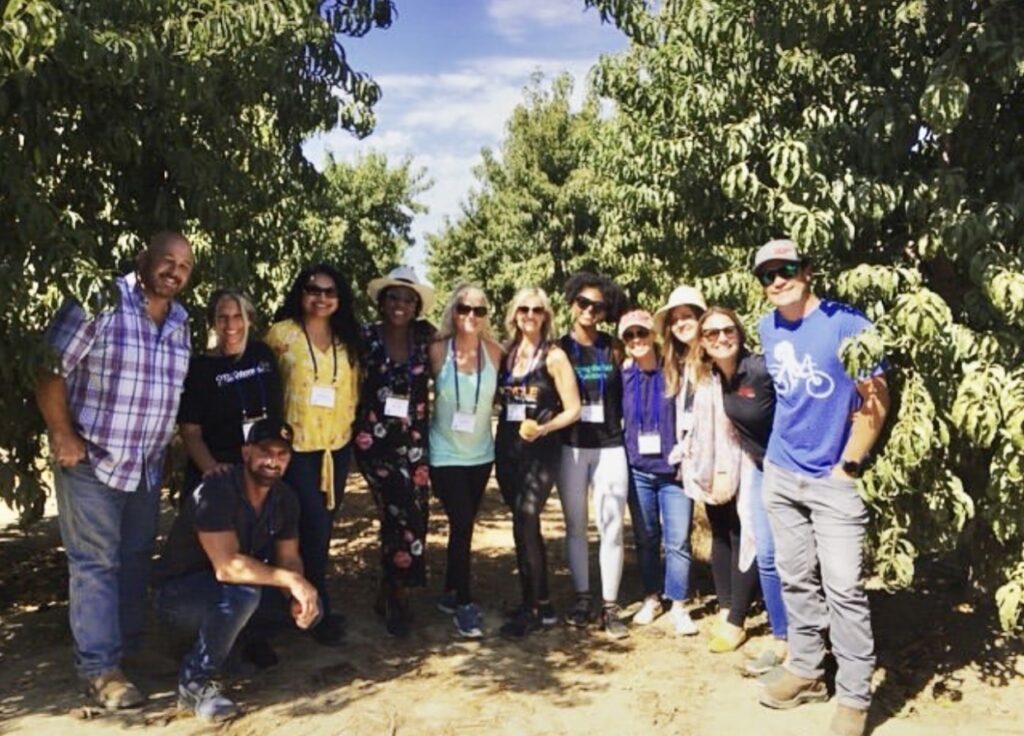
In September, I spent 4 days in the San Joaquin valley soaking up some California sun while participating in a Safe Fruits and Veggies Farm Tour. The purpose of the media tour was to learn about new innovations and technologies being used to grow, harvest and package safe & delicious produce. While there, I saw how California table grapes, peaches, plums, nectarines and a variety of citrus fruits get from the field to your table in a sustainable, safe way.
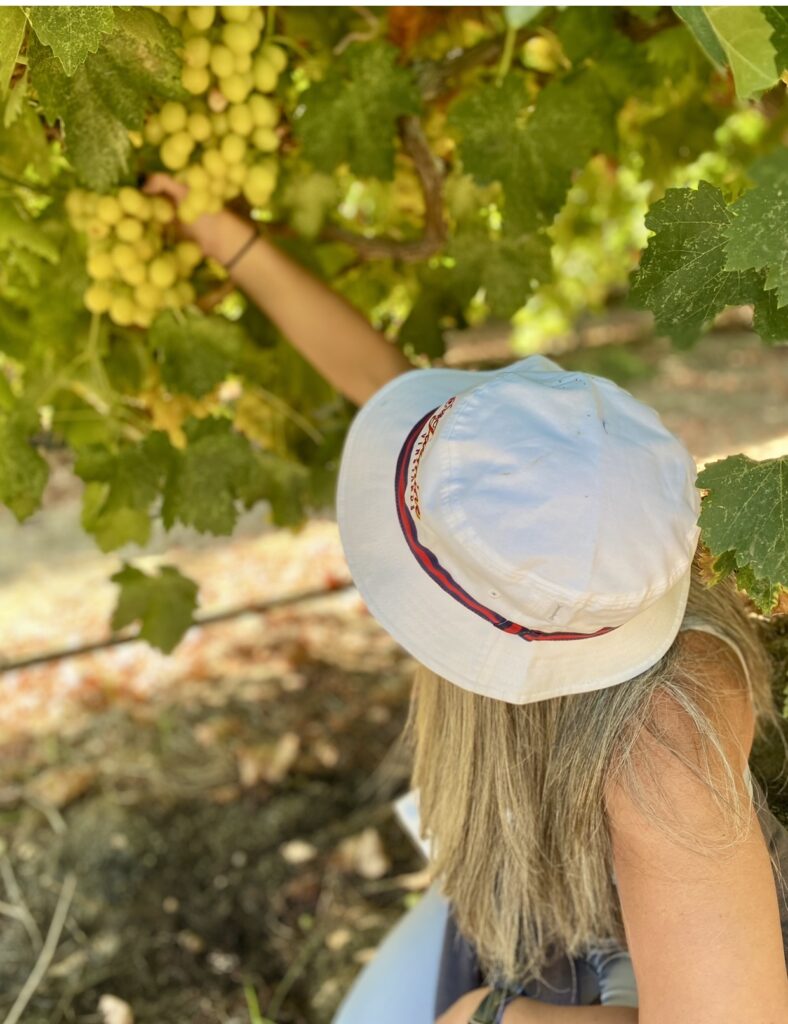
When I got the invite from the Alliance for Food and farming, I jumped at the chance to participate. I had never seen a table grape vineyard, a citrus grove or a stone fruit farm operation in -person. And after 2 years of virtual meetings, presentations, conferences and tours, I was more than ready to be back in the field, seeing & learning directly from the famers that grow our food. In addition, the invite list included eight other fabulous media dietitians from throughout the nation. Many of whom are my friends. I was thrilled to be included.
What I Learned During The Safe Fruits And Veggies Farm Tour
While I love visiting new places and hanging with my fellow dietitian colleagues, my number one reason for attending these tours is to learn. Not only for myself, but so I can share the information with consumers like you. During this trip, I knew I’d learn a lot. I would see first-hand how table grapes, citrus and some stone fruits are grown, harvested, packed and shipped. Plus, I’d have access to farmers, nutrition scientists, researchers, engineers and agriculture experts, all in the same place, all at one time.

I prepared a list of questions in advance, and I had a lot! I wanted to understand what’s new with citrus greening, soil health, water usage, pesticides, and new technologies to increase crop yield and help decrease the need for manual labor.
All of my questions really boil down to two things – produce safety and sustainability. I wanted to know what farmers are doing today to assure we have enough safe produce to feed our growing population for years and years to come.
I’m happy to say that between all of our stops, I got all of my questions answered. Here’s a recap of what I saw and learned during the safe fruits and veggies farm tour.
Day #1 – Safe Fruits & Veggies Farm Tour
Farm Tour Stop #1 – Porterville Citrus
Our first stop was to Porterville Citrus. We were greeted with freshly squeezed orange juice then given a brief overview of California citrus before heading inside the packinghouse.
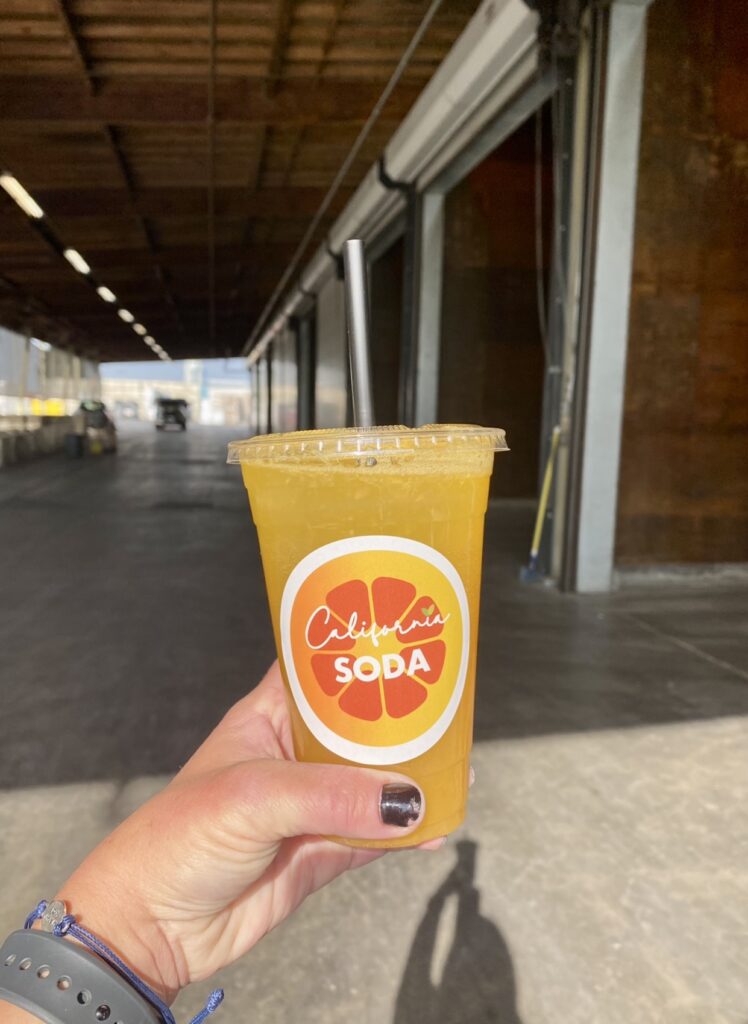
We were shown the entire process – from when the truck loads of oranges arrive from the field, all the way through to when they are boxed and ready to ship. It’s fascinating to watch how quickly an orange can go from a California citrus tree to your local grocery store!
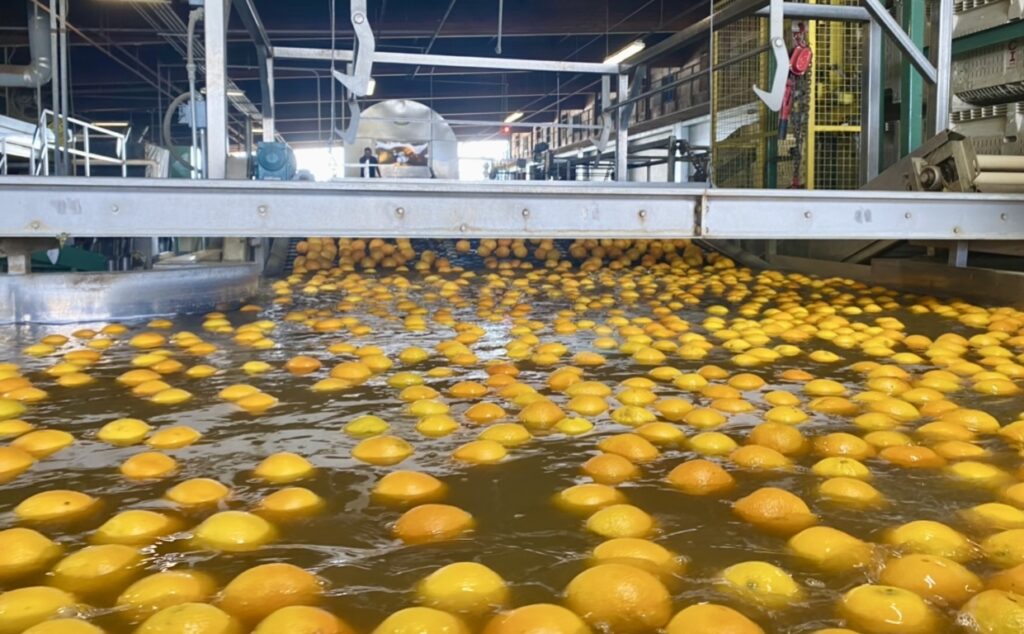
When it comes to oranges, many people think of Florida. But over 90% of the oranges grown in Florida get squeezed into orange juice. It’s California that holds the title as the largest producer and distributor of fresh citrus in the United States. Valencia, navel and mandarins are among their top selling varieties, but they produce other orange varieties, as well as lemons and grapefruits, too.
In addition to seeing the process, we learned loads of interesting facts about planting, growing and caring for citrus trees. That started a great conversation about controlling pests.
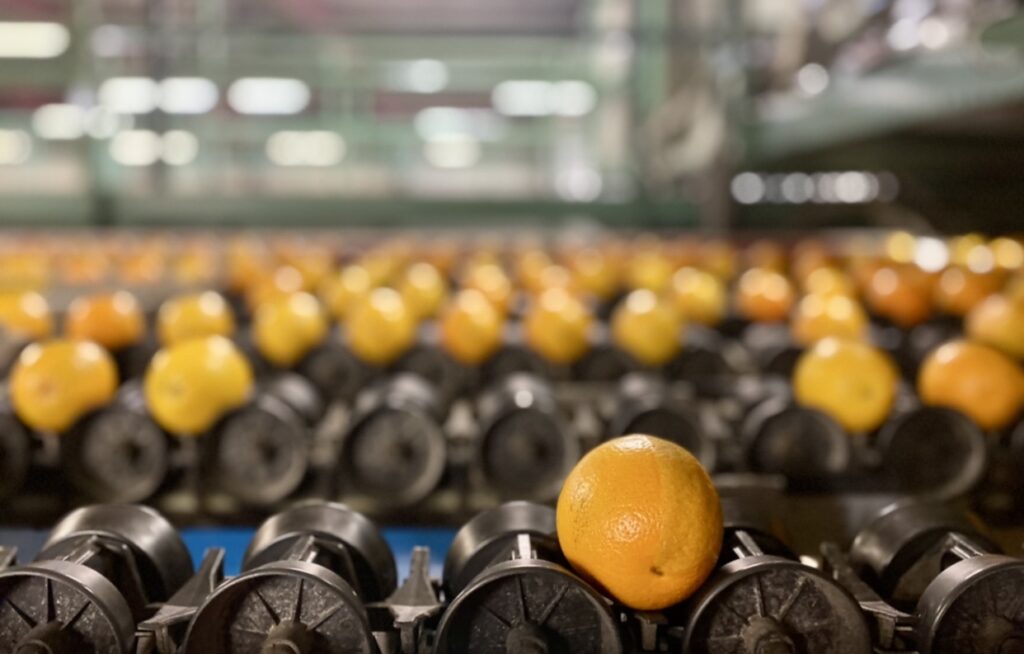
There are quite a few pests that are attracted to citrus trees. One that we spent time talking about at Porterville Citrus is the California Red Scale (CRS). The scale insect is native to Southeast Asia but has been found in all arid and semiarid regions of the world where citrus is grown, including the San Joaquin valley. CRS damages all above ground parts of the citrus tree, and decreases the quality of the fruit. To help control this, we learned about season long disruption dispenser they hang on the citrus trees called CheckMate® CRS. It’s a small white pouch with an orange hook that farmers hang on the citrus trees. Thanks to technology that allows for continuous pheromone release, only one application per season is needed. This method of pest control is authorized for organic production, as well.
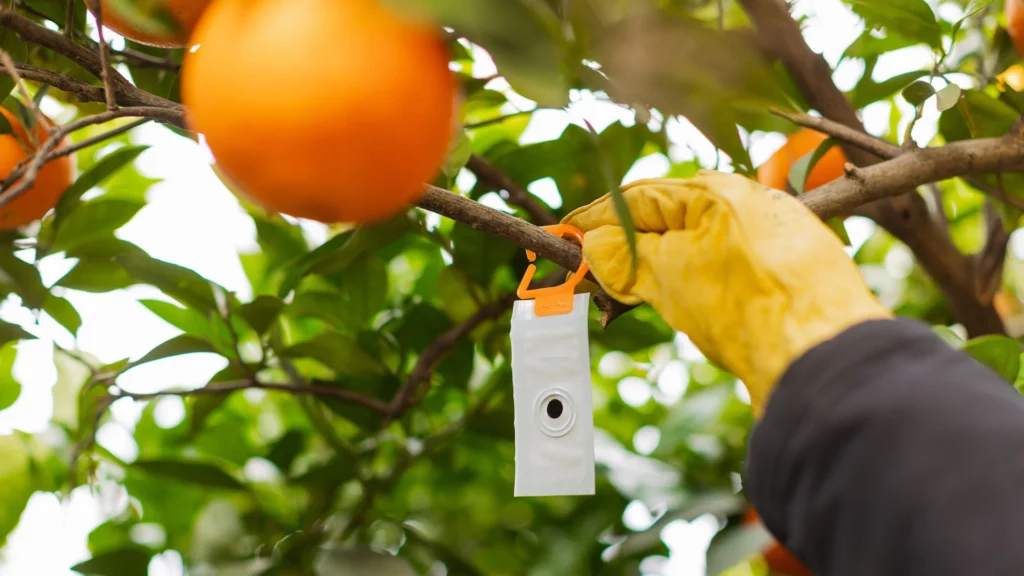
photo credit: Suterra
I also had questions about the Asian citrus psyllid. That’s the insect responsible for spreading the disease known as citrus greening, or HLB. Considering the profound effect citrus greening has had on Florida citrus trees and the orange juice industry, I was curious why no one was mentioning its impacting on California’s groves. Turns out, it’s because it hasn’t been made its way into large California citrus groves yet. It has, however, been identified in citrus tress found on residential properties.
There are significant, joint efforts in place between California’s Department of Food and Agriculture and the Citrus Pest & Disease Prevention Program to identify infected trees. Once found, quarantine measures are immediately put into place.
Farm Tour Stop #2 – HMC Farms
Our next visit was to HMC Farms in Kingsburg, California. This 5th generation family-owned farm consists of over 2500 acres of both organic and conventional grown peaches, plums, nectarines and grapes. Here, we got to see how a peach goes from the tree, to the packinghouse where its sorted, graded and boxed, to the truck to be shipped.
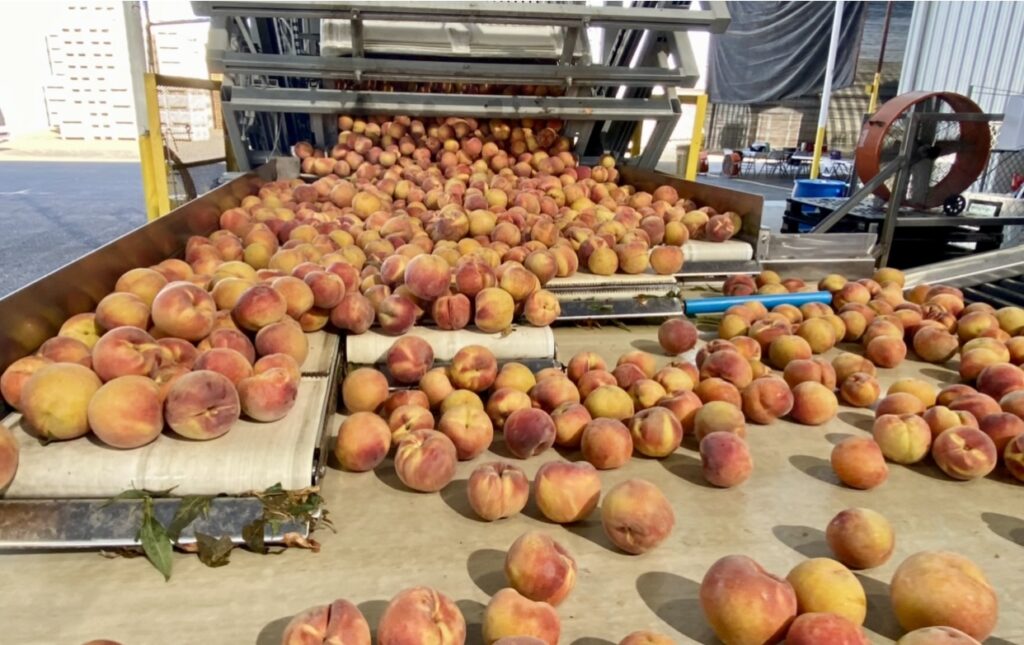
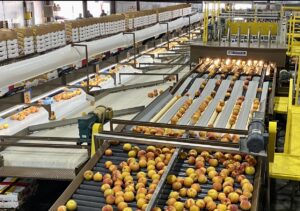
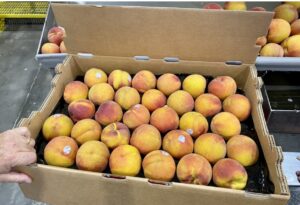
Despite the high-tech operation, labor is still a big part of the operation, both inside the packinghouse and in the field.
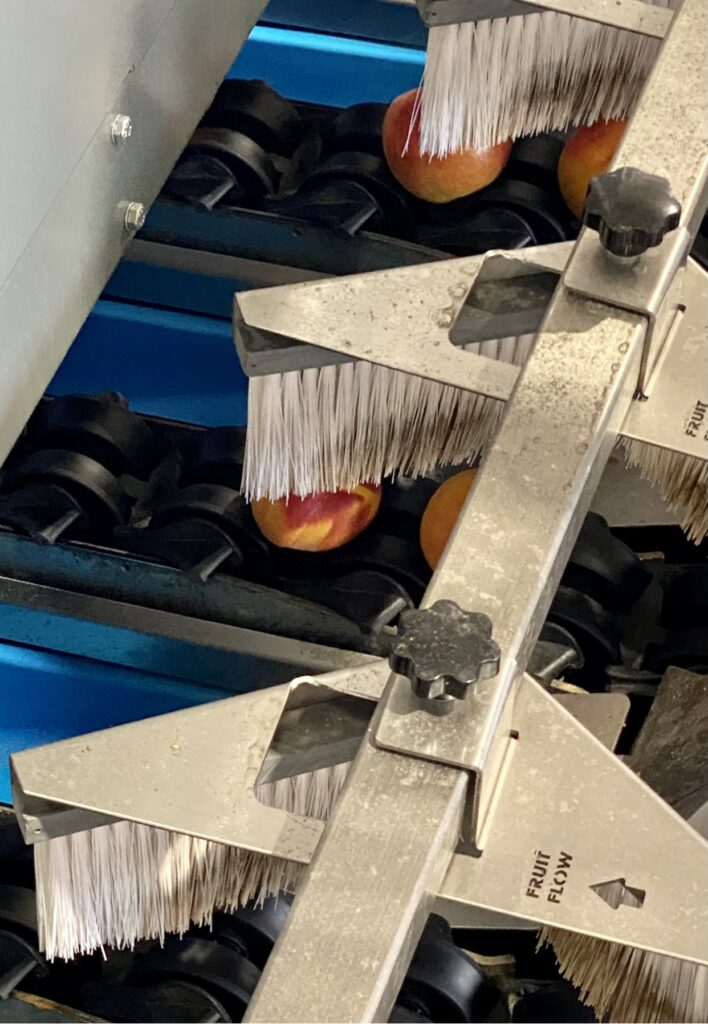
What I learned and saw on this farm is by far the most impressive combination of farming, science, technology, innovation and caring about people that I have ever seen. HMC Farms is recognized in the farming industry and by their neighboring farms for their innovative, new approach to growing tree fruit. About four years ago, they started growing peaches in a completely new way, using what’s referred to as high-density planting. This approach results in a better crop yield earlier than with traditional planting methods. It’s also a big advantage for the pickers in the field. With traditional planting, pickers climb a ladder, pick ~20 pieces of fruit from the tree, then have to move the ladder to the next tree. With this method, pickers use platforms so it’s less physically exhausting.
In addition to their innovative planting process, they also shared new technologies they are investigating to reduce the need for physical laborer’s. Peaches, as well as other stone fruits, have a very short window for when the fruit can be picked. If left on the tree too long, the fruit becomes overripe and the quality is decreased. That’s a big problem if they don’t have enough labor to pick the fruit. Unfortunately, farmers experienced this first-hand during the Covid pandemic. I won’t get into all of the details here, but think robots and drones designed specifically to pick peaches!
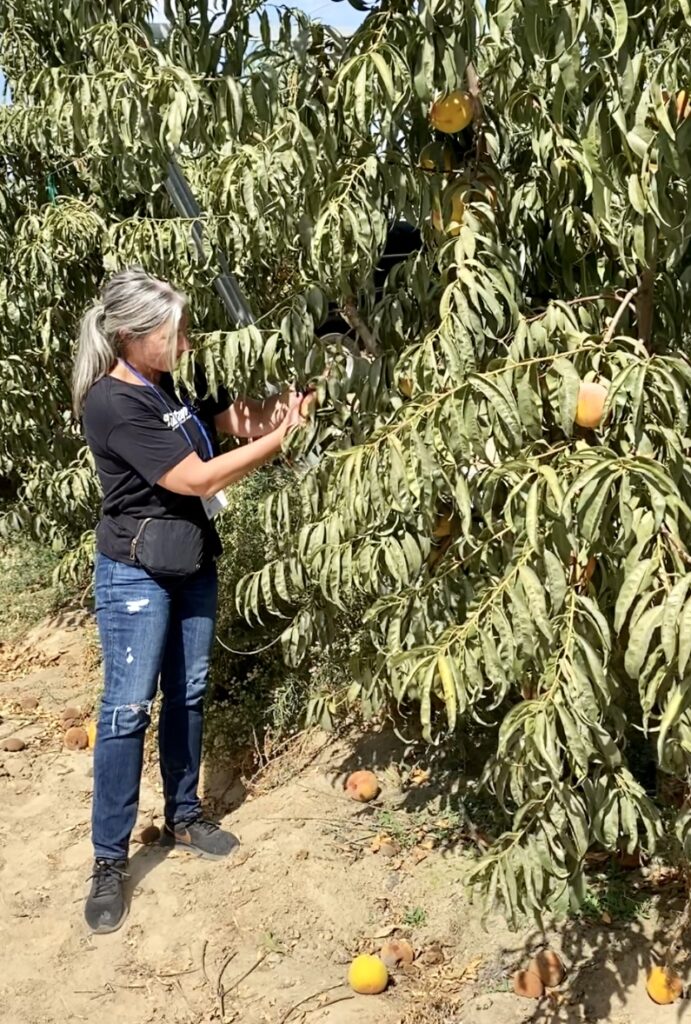
What Are Farmers Doing To Reduce Water Usage
To reduce water usage, they use drip and micro irrigation practices. With this method, water is run through pipes that are either buried or lying slightly above the ground next to the crops. The pipes have holes in them to allow water to slowly drip onto the crop roots and stems. It is much more efficient than tradition spray irrigation because the water can be directed only to the plants that need it with very little water getting lost to evaporation.
Pesticide Use On Produce
After our discussion on their innovative planting approach and new technology to reduce the need for manual pickers, the conversation went to pest control. To be completely honest, hearing more on pesticide usage was not at the top of my list. That’s because, I’ve been on enough farm tours and learned enough about pesticide usage on produce to know that it’s not a concern. But, since it’s a top concern for consumers and I still get a lot of questions about it, it’s important to continue the conversation.
Years ago, entire fields were sprayed with pesticides to make sure the farm was covered. That’s not the case anymore. Today, there are strict regulations on how much, and what types of pesticides can be used to control pests in the field. California, especially, is highly regulated and has some of the strictest pesticide and fungicide laws that exist.
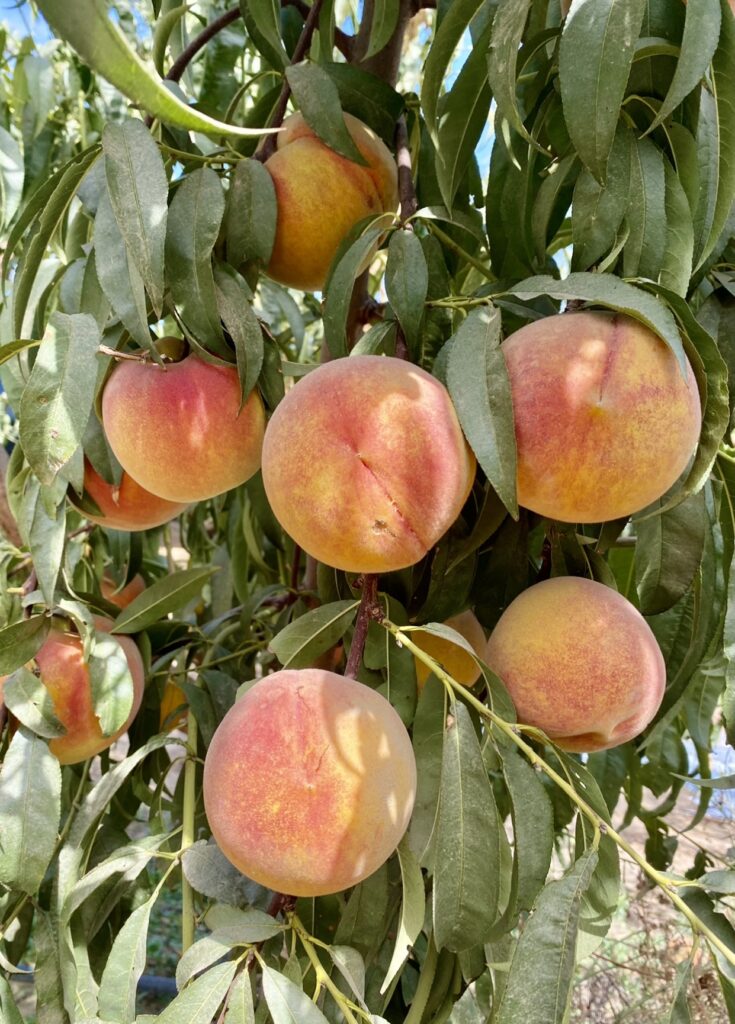
During our visit to HMC Farms, they described their use of integrated pest management (IPM) – an effective and environmentally safe approach to controlling pests that is being used by farmers. The approach involves monitoring and identifying pests and taking steps to prevent to them. For example, they use trapping technology and have agricultural pest control advisor’s (PCA’s) that walk the fields looking for problems. If a problem is identified, action is taken to control the pests using as little pesticides as possible. The CheckMate® CRS that’s being used in citrus groves is another example of integrated pest management being put into practice.
Farmers are required to do residue testing to make sure they are under the limits. Consumers should feel confident that the fresh produce they are eating is safe to eat. USDA/FDA data shows that, if pesticide residues are present at all on foods, they are at levels well below safety tolerances established by the EPA and “pose no safety concern.”
That said, it’s still a healthful habit to wash your produce before eating. You can reduce and often eliminate pesticide residues – if they are present at all – by washing fresh produce with cold or warm running tap water.
Farm Tour Stop #3 – Family Tree Farms Research Center
Our next and final stop of the day was to Family Tree Farms Research Center. Here we learned some of the fascinating research happening to improve the taste and nutritional profile of produce. The process of producing hybrid fruits might sound like a science experiment, but it’s absolutely normal and happens naturally more often than people realize. Hybrids are developed using controlled cross pollination, not genetically modified organism (GMO) technology. Farmers benefit from hybrids that can survive different environmental conditions while consumers benefit from their improved taste and nutritional value.
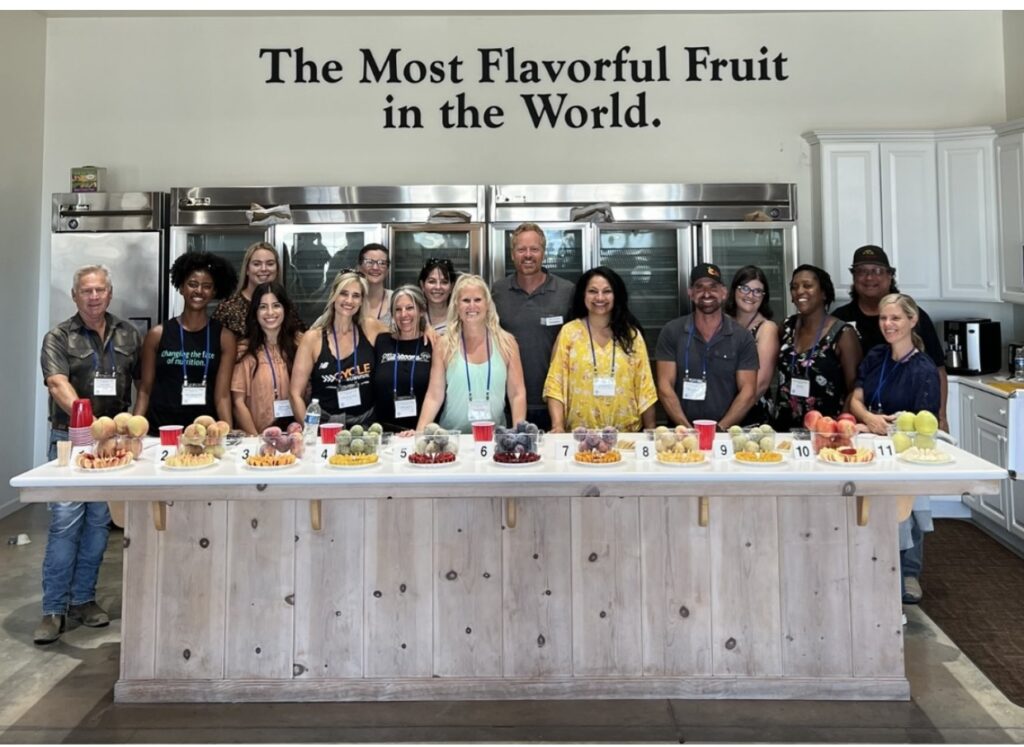
We got to taste-test some of the new varieties, many of which are not even on the market yet. My favorite was the plumcot, which is the combination of a plum and an apricot. Yum!
Day #2 – Safe Fruits & Veggies Farm Tour
Farm Tour Stop #1 – Jasmine Vineyard and Packinghouse
Our first stop of day two was to Jasmine Vineyard & Packinghouse, where we got to see the production and harvest of both green and red grapes.

We also got a lesson on how to cut and prune the perfect bunch. My appreciation for grapes and the harvesters that package them has quadrupled from seeing this process. It is extremely time-intensive. The harvesters walk through their section of the vineyard, identify a bunch that is ready and then cut and prune it. If it’s left on the vine too long, the grapes can overripen and become mushy.
Once the grape bunch is cut from the vine, it gets examined. Any grapes that are soft, split, discolored or scarred are removed. The perfect grape bunch then gets put in a bin.
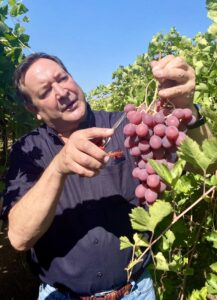
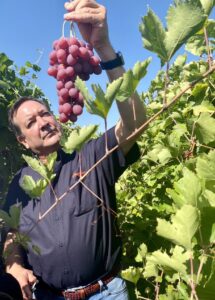
Unlike peaches, nectarines, plums and citrus fruits that get picked and taken by truck to the packinghouse, grapes are packaged right on the farm. Once the bin if full, it is taken to a packaging station at the beginning of the row. There, it is weighed, labeled and put into a bag. The bags go into a box, and once the box is full it is loaded on a truck and taken to the packinghouse.

During our visit, the harvesters were hard at work in the vineyard – all so we can have delicious table grapes.
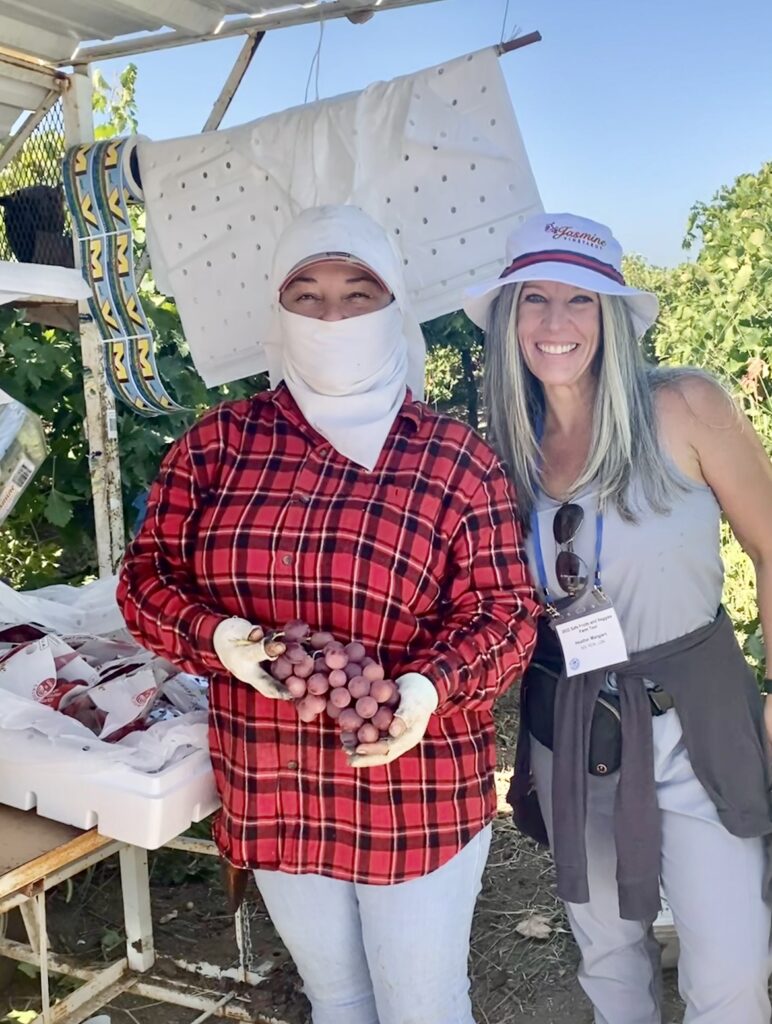
Next, we headed to the packinghouse. After the tour, we were served a delicious, homemade, Croatian-style lunch. Our host, Jon Zaninovich, introduced us to the other guests they had invited, who surprisingly were other table grape growers. It was so heart-warming to see how well they all get along and support one another. Though they are technically competitors, many of them have grown up together and know each other’s families. They work jointly to address challenges for everyone’s benefit.

Stop #2 – McKeller Family Farms
Our next and final stop of the day was to McKeller Family Farm, home to Farmer Bob’s World.
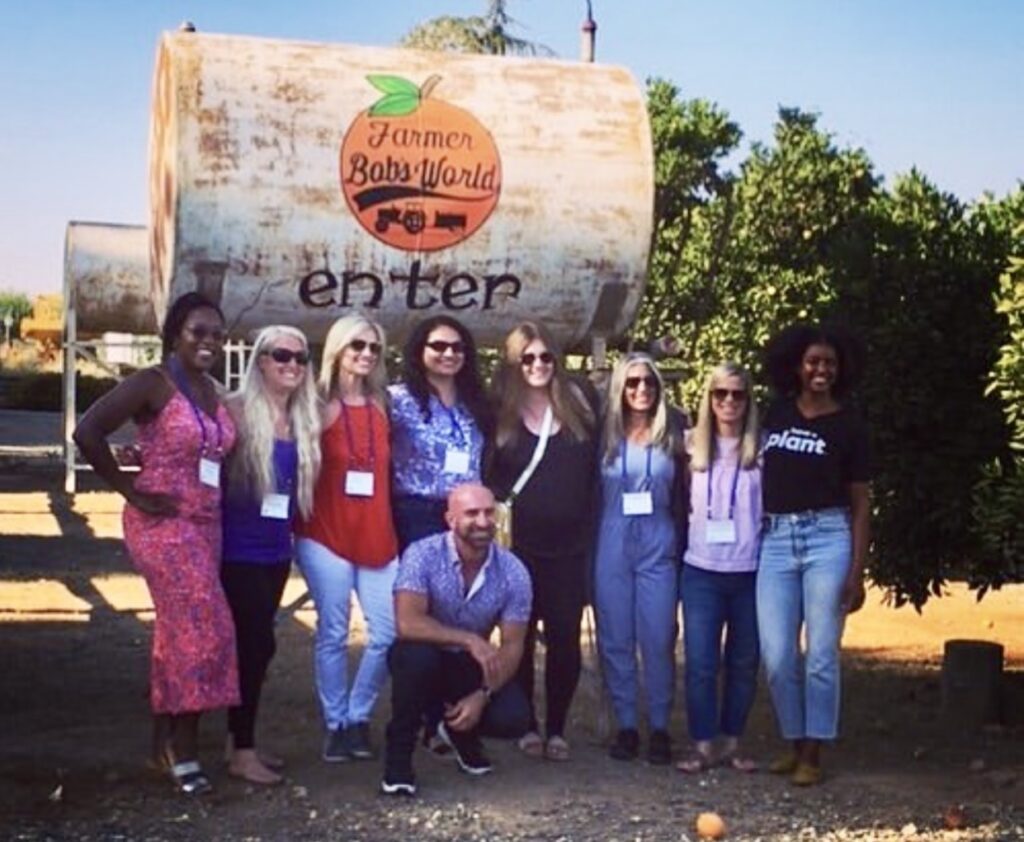
Upon arrival, we all loaded into a large wagon and took a tractor ride around the orange groves. During the tour, we learned about the 4 citrus varieties they grow (2 types of mandarins and 2 types of oranges) and got to see both mature trees that have fruit and baby tress that are not yet producing. We also learned about some of the machines used to care for the trees (the topper, hedger and skirter) and we talked a lot more about citrus pests and pest control.
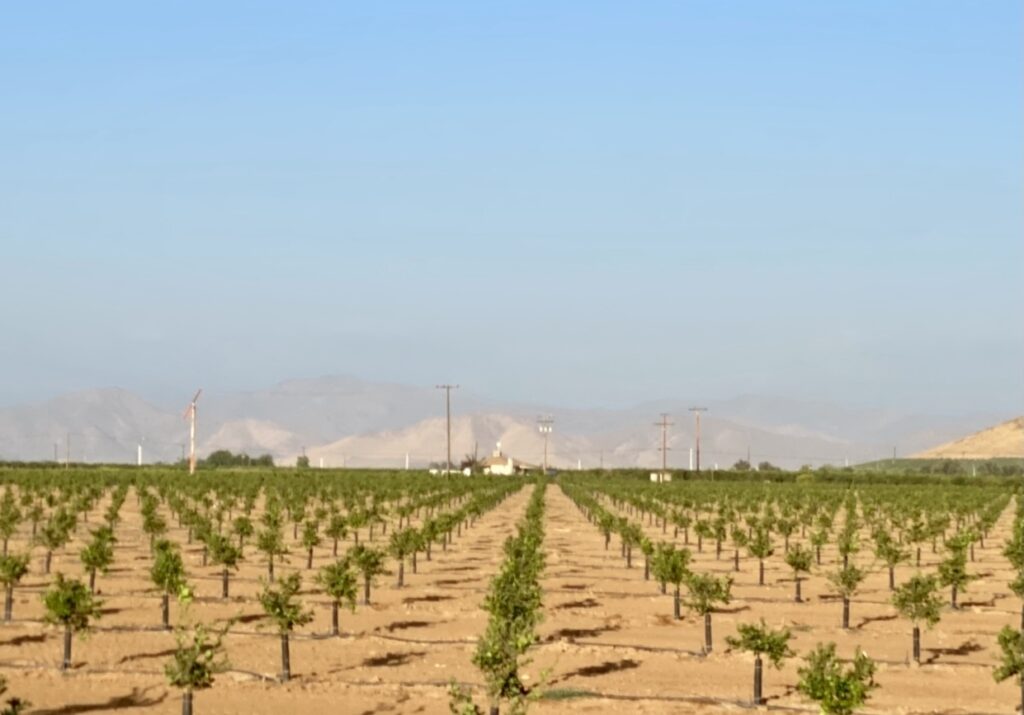
Following the tour, we were led into the orange grove, where they had an amazing dinner set up for us. It was absolutely magical.
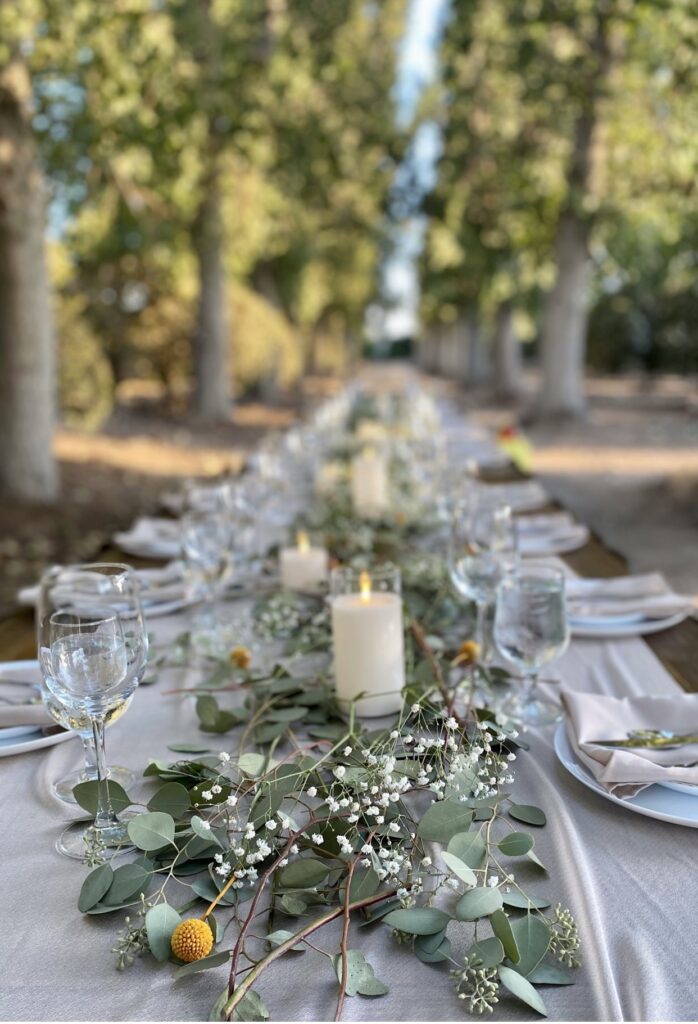
Safe Fruits And Veggies Farm Tour – Final Thoughts
The current estimated population in the United States is 333,264,940. The U.S. Census Bureau projects that the population will grow by 2.3 million people each year, until 2030. That means, in just 8 more years, we will need enough produce to feed an estimated 16.1 million more people. Well. at least I hope they will be eating produce!
In order to feed our growing population, farming practices have to change. And thankfully, they are!
By bringing science and technology to the farming industry, farmers will be able to feed our growing population. From the way we grow food, to the way we package and ship food, to the working conditions and environments – it’s all becoming more sustainable, while producing more safe and delicious produce.
Have you thanked a farmer lately?
I hope after reading this you feel proud and more confident of the work being done to bring you delicious and safe produce. The next time you buy a bag of grapes or slice open an orange, take a minute to think about how much care, time and effort it took to get it to you.
A huge thank you to The Alliance For Food and Farming for hosting the safe fruits & veggies farm tour and to the California Fresh Fruit Association, the International Fresh Produce Association, California Citrus Mutual, Jasmine Vineyards, Family Tree Farms, HMC Farms, Porterville Citrus, Farmer Bob’s World, Grapes from California and Western Growers for taking the time to teach & show us the operations and answer all of our questions on sustainability, pest control & pesticide use, growing practices, breeding and nutritional quality.
An extra special thank you to all of the farmers, packers, harvesters, growers and so many others that work hard each day to supply us with safe, nutritious and delicious produce.
If you’re interested in learning more about safe produce, check out my farm tour post at the strawberry, celery, artichokes, romaine and Iceberg lettuce fields.

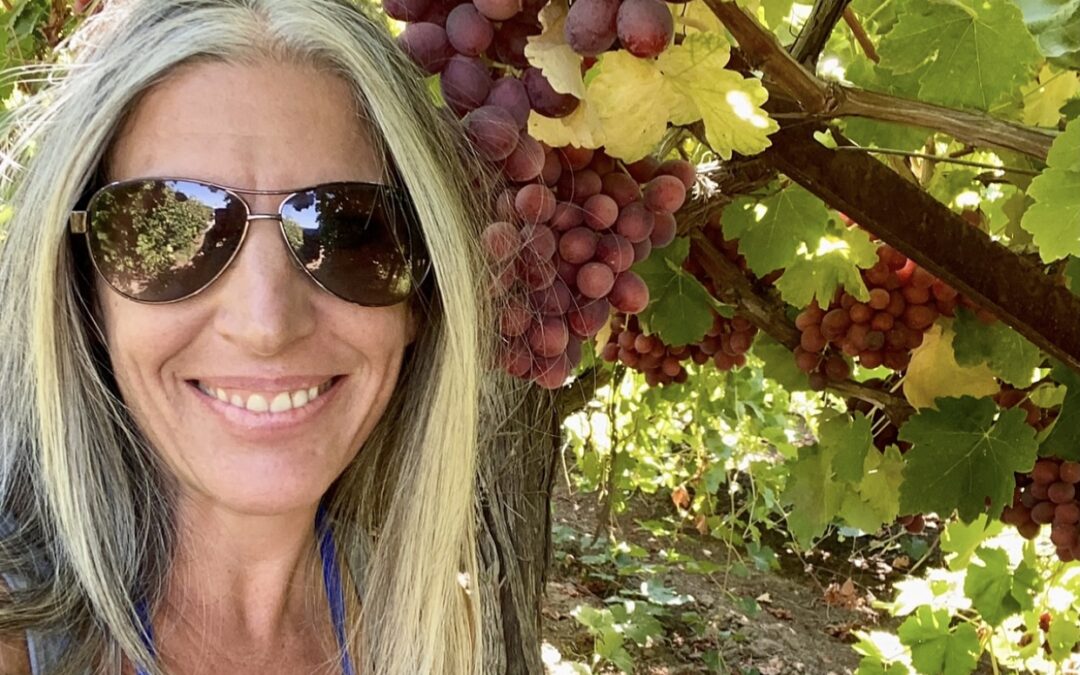
 Hi, I’m Heather – a registered dietitian, busy mom, consultant, adventure junkie and travel addict who has mastered living healthy on the go. My blog is where I share simple recipes and healthy living tips to help and inspire others to live their best life.
Hi, I’m Heather – a registered dietitian, busy mom, consultant, adventure junkie and travel addict who has mastered living healthy on the go. My blog is where I share simple recipes and healthy living tips to help and inspire others to live their best life.
Great article, now I’m in the mood for my delicious grapes I have in the frig😄
I came across your blog looking up allergic contact dermatitis. Anyways, just wanted to say your hair looks amazing. I’ve always thought silver looked better than black, and I hope my hair can look like yours one day.